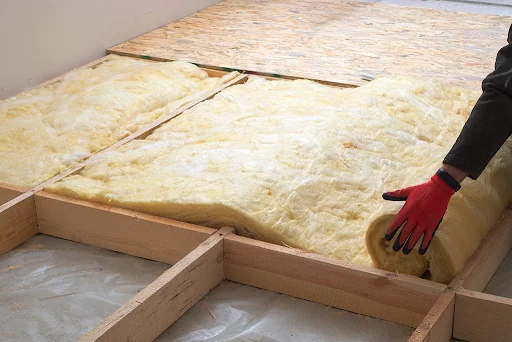
Proper attic insulation has health, comfort, economic and safety benefits. There are several different materials that can be used to insulate your attic, with the most common being fiberglass, cellulose, foam, mineral wood, natural fibers and denim. There are also several ways to install insulation. Those are discussed below.
R-Values
But before determining how to insulate your attic, you need to understand R-values. The R-value measures the material’s resistance to conductive heat flow. The R-value depends on the type of insulation, its thickness, and its density. The higher the R-value, the greater the insulating effectiveness.
Insulation Installation Alternatives
Alternatives for installing insulation include:
- Loose Fill
- Batts
- Rolls
- Foam Board
- Spray Foam
- Radiant Barriers
Loose Fill Insulation, also called blown-in insulation, is blown or sprayed into place. It is usually made of fiberglass, cellulose or mineral wood. While you can rent a machine to install it yourself, most people hire a professional. Because one can blow the insulation into hard-to-reach places, it is best for attics, even if the R-value is lower than other insulations. This is not the least expensive insulation around, but it is not the most expensive either.
Insulation Batts are pre-cut sections of insulation that come in a wide variety of insulation materials. These pre-cut pieces are especially effective for installation between framing, including framing in attics. Batts are also affordable and have R-values between R-29 and R-38.
Rolled Insulation is what it sounds like – insulation that is rolled between wall and ceiling framing. Roll lengths range from 20 to 40 feet. Like batts, insulation rolls come in pre-cut widths, are affordable, and have similar R-values between R-29 and R-38. However, they leave less opportunity for gaps between sections, perhaps making them more desirable than batts. Also, installing rolled insulation can be a DIY project.
Foam Board Insulation is a very popular type of insulation because it has a high R-value. It is usually made of plastic material such as polystyrene, polyisocyanurate or polyurethane.
Spray Foam Insulation is a liquid latex or polyurethane foam that expands and hardens to fill gaps. This is an effective method for hard-to-reach places and small gaps. Because spray foam has high R-values ranging from R-37 to R-65, it is ideal for cold climates. But it is more expensive too.
Radiant Barriers are made from a reflective material such as aluminum foil over a substrate like kraft paper or foam board. This alternative reflects heat away from your home. Since most heat enters the home through the attic, this method is great for attics. It is not measured in R-values.
Contact Ravinia Plumbing, Sewer, Heating & Electric about Our Quality Home Services
Although Ravinia Plumbing doesn’t provide insulation installation services, we think it is important to provide useful information even about products we don’t carry or services we don’t offer. We do offer a full range of heating, cooling and indoor air quality services for your home or business. We’ve been in business since 1928, and we’ve made a name for ourselves as one of the most trusted and reliable plumbing, sewer, heating and air conditioning, and electrical companies in Chicagoland. Contact us today to schedule an appointment.




